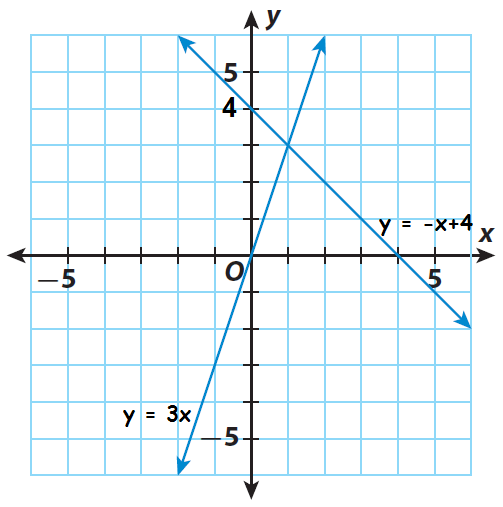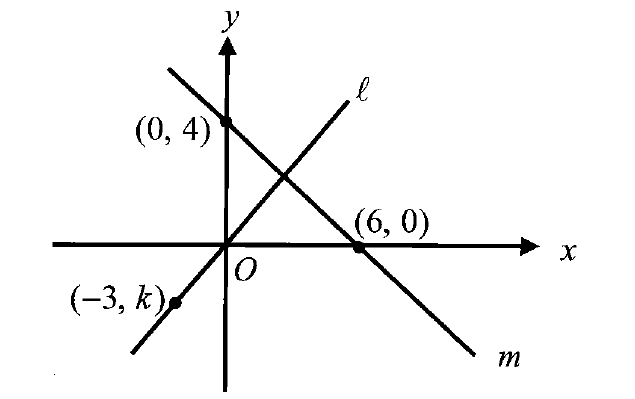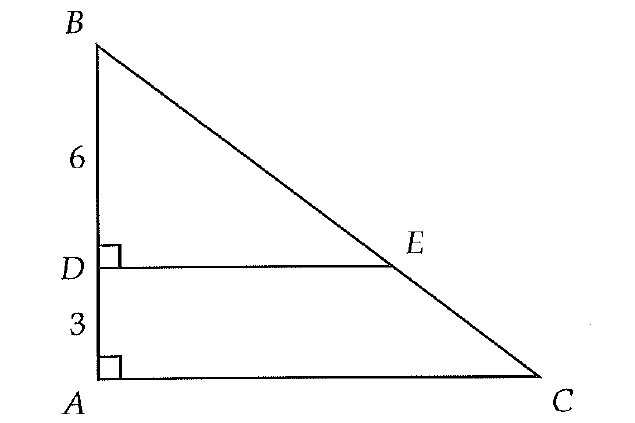SOLVING SYSTEM OF EQUATIONS
We can use one of the following methods to solve a system of linear equations.
3. Cross Multiplication Method
Solved Examples
Example 1 :
Solve by elimination method.
3x + 4y = 7
x - 4y = -3
Solution :
3x + 4y = 7 -----(1)
x - 4y = -3 -----(2)
In the given two equations, y-term has the same coefficient and different signs. By adding the above two equations, we can eliminate y-term and solve for y.
(1) + (2) :
4x = 4
Divide each side by 4.
x = 1
Substitute x = 1 in (1).
3(1) + 4y = 7
3 + 4y = 7
Subtract 3 from each side.
4y = 4
Divide each side by 4.
y = 1
So, the solution is
(x, y) = (1, 1)
Example 2 :
Solve by elimination method.
3x + 4y = -25
2x - 3y = 6
Solution :
3x + 4y = -25 -----(1)
2x - 3y = 6 -----(2)
Both x terms and y terms have different coefficients in the above system of equations.
Let's try to make the coefficients of y terms equal.
To make the coefficients of y terms equal, we have to find the least common multiple 4 and 3.
The least common multiple of 4 and 3 is 12.
Multiply the first equation by 3 in order to make the coefficient of y as 12 and multiply the second equation by 4 in order to make the coefficient of y as -12.
(1) ⋅ 3 ----> 9x + 12y = -75
(2) ⋅ 4 ----> 8x - 12y = 24
Now, we can add the two equations and eliminate y as shown below.

Divide each side by 17.
x = -3
Substitute -3 for x in (1).
(1)----> 3(-3) + 4y = -25
-9 + 4y = -25
Add 9 to each side.
4y = -16
Divide each side by 4.
y = -4
So, the solution is
(x, y) = (-3, -4)
Example 3 :
Solve for x and y using substitution.
x - 5y + 17 = 0
2x + y + 1 = 0
Solution :
x - 5y + 17 = 0 -----(1)
2x + y + 1 = 0 -----(2)
Step 1 :
Solve (1) for x.
x - 5y + 17 = 0
Subtract 17 from each side.
x - 5y = -17
Add 5y to each side.
x = 5y - 17 -----(3)
Step 2 :
Substitute (5y - 17) for x into (2).
(2)-----> 2(5y - 17) + y + 1 = 0
10y - 34 + y + 1 = 0
11y - 33 = 0
Add 33 to each side.
11y = 33
Divide each side by 11.
y = 3
Step 3 :
Substitute 3 for y into (3).
(3)-----> x = 5(3) - 17
x = 15 - 17
x = -2
So, the solution is
(x, y) = (-2, 3)
Example 4 :
Solve the following system of equations using cross multiplication method.
2x + 7y - 5 = 0
-3x + 8y = -11
Solution:
First we have to change the given linear equations in the form a1x + b1y + c1 = 0, a2x + b2y + c2 = 0.
2x + 7y - 5 = 0
-3x + 8y + 11 = 0

x/(77 + 40) = y/(15 - 22) = 1/[16 + 21]
x/117 = y/(-7) = 1/37
|
x/117 = 1/37 x = 117/37 |
y/(-7) = 1/37 y = -7/37 |
So, the solution is
(x, y) = (117/37, -7/37)
Example 5 :
Solve the following system of equations by graphing.
x + y - 4 = 0
3x - y = 0
Solution :
Step 1 :
Let us re-write the given equations in slope-intercept form (y = mx + b).
y = - x + 4
(slope is -1 and y-intercept is 4)
y = 3x
(slope is 3 and y-intercept is 0)
Based on slope and y-intercept, we can graph the given equations.

Step 2 :
Find the point of intersection of the two lines. It appears to be (1, 3). Substitute to check if it is a solution of both equations.
|
x + y - 4 = 0 1 + 3 - 4 = 0 ? 4 - 4 = 0 ? 0 = 0 True |
3x - y = 0 3(1) - 3 = 0 ? 3 - 3 = 0 ? 0 = 0 True |
Because the point (1, 3) satisfies both the equations, the solution for the given system is (1, 3).
Kindly mail your feedback to v4formath@gmail.com
We always appreciate your feedback.
©All rights reserved. onlinemath4all.com
Recent Articles
-
Digital SAT Math Problems and Solutions (Part - 106)
Feb 04, 25 08:16 AM
Digital SAT Math Problems and Solutions (Part - 106) -
SAT Math Resources (Videos, Concepts, Worksheets and More)
Feb 04, 25 08:15 AM
SAT Math Resources (Videos, Concepts, Worksheets and More) -
Digital SAT Math Problems and Solutions (Part - 107)
Feb 04, 25 08:11 AM
Digital SAT Math Problems and Solutions (Part - 107)

